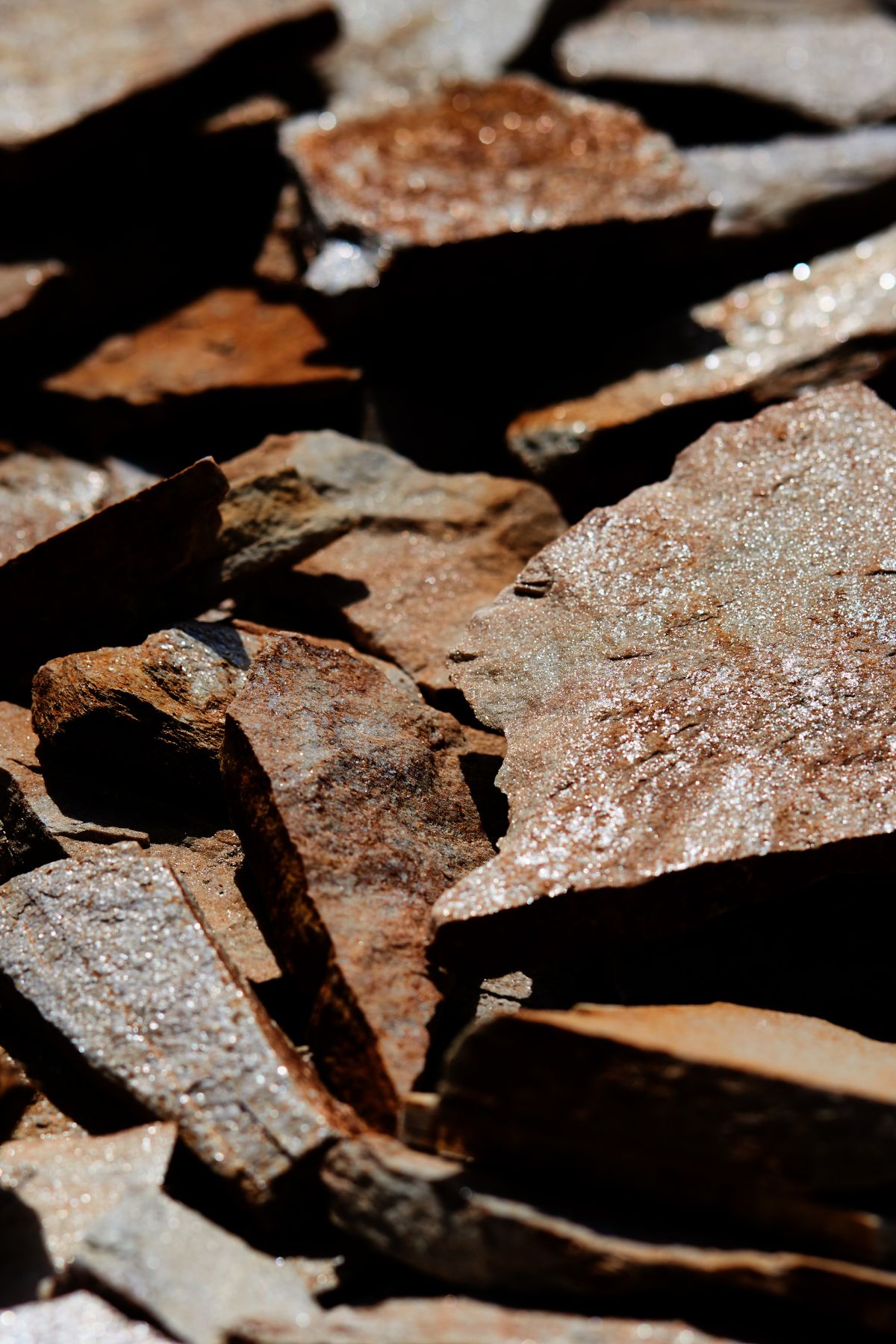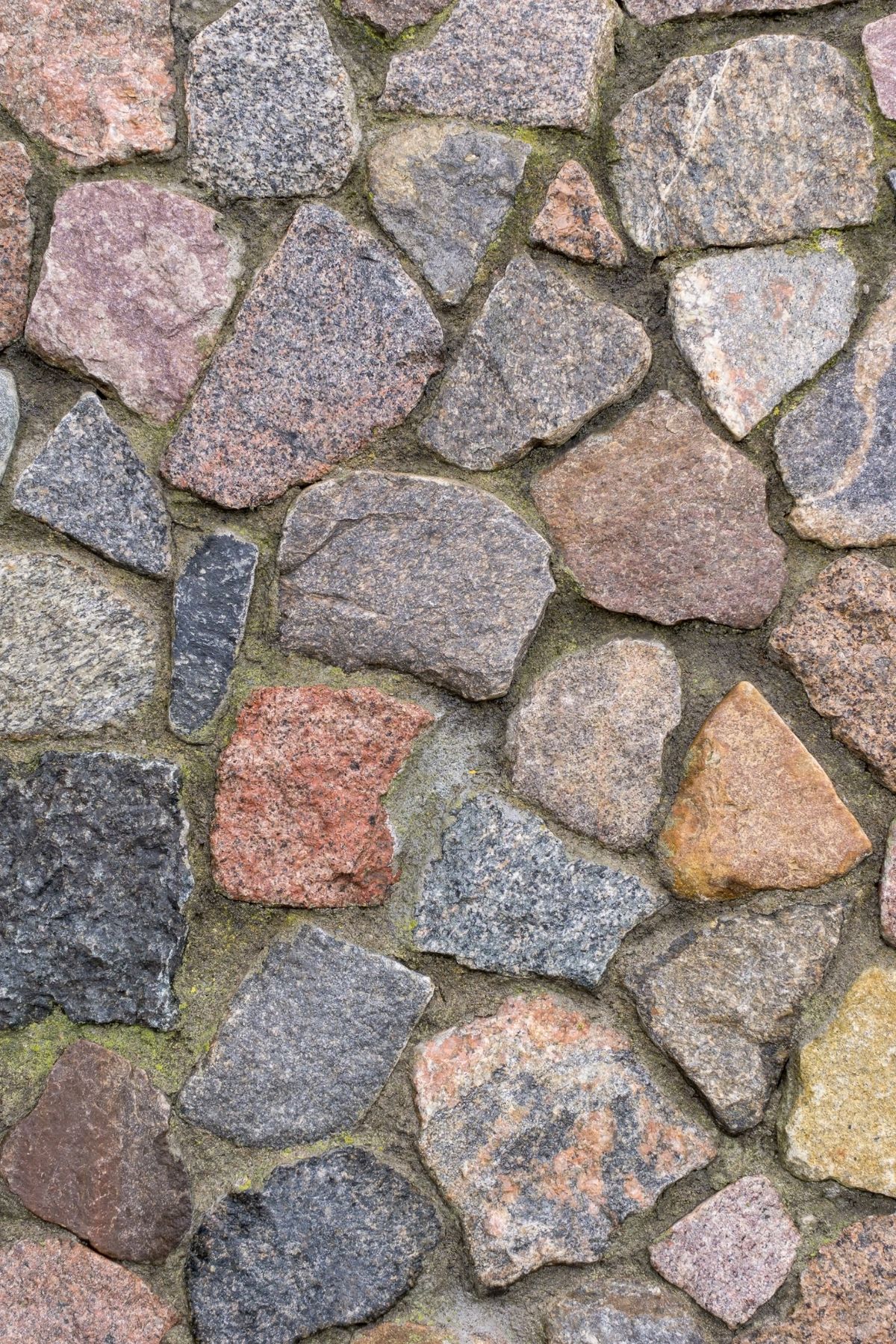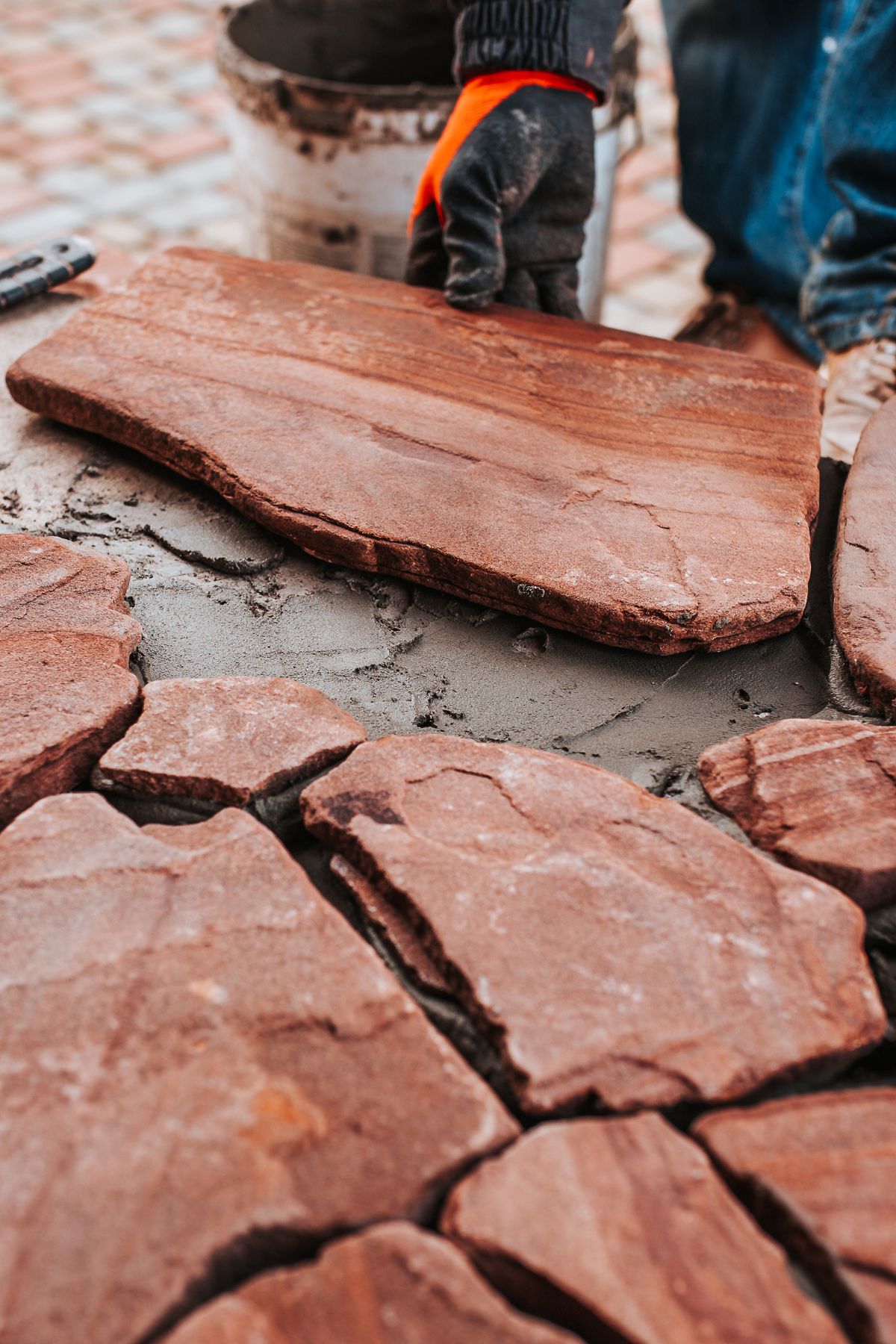A decomposed granite calculator is an essential tool for anyone planning a landscaping project that uses decomposed granite (DG) as a surfacing material.
Decomposed Granite Calculator
ft in
ft in
Cost Estimator (Optional)
Whether you’re building a garden path, a patio base, or a full driveway, knowing exactly how much DG you need is critical to saving money, time, and effort. Overestimating can lead to wasted material and unnecessary cost, while underestimating can delay your project and force additional deliveries.
Decomposed granite is a popular choice because of its natural appearance, excellent drainage properties, and versatility in both residential and commercial applications. However, estimating how much you need isn’t as straightforward as multiplying length by width. Factors such as depth, compaction rate, waste allowance, and material density all affect the final quantity required. That’s where a decomposed granite calculator becomes invaluable.
Instead of relying on rough estimates or guesswork, a proper calculator lets you input specific dimensions, choose the shape of your area, and factor in the unique properties of different types of DG. This not only ensures accuracy but also helps reduce environmental waste and project setbacks. A good calculator can even provide cost estimates, helping you stay within budget while making informed choices about material types and suppliers.
In today’s data-driven world, tools like the decomposed granite calculator aren’t just convenient—they’re smart, efficient, and often free to use online. They empower homeowners, contractors, and landscape designers to plan with precision and confidence.
What Is Decomposed Granite?
A decomposed granite calculator is most effective when paired with a solid understanding of the material it’s designed to measure. Decomposed granite (DG) is a natural byproduct of granite weathering. Over time, solid granite rock breaks down into finer particles—ranging from gravel-sized fragments to coarse sand. This material is then harvested, screened, and sometimes mixed with stabilizers to create various forms suited for different applications.
Because decomposed granite is both functional and visually appealing, it has become a staple in landscaping, gardening, and outdoor construction projects. It’s commonly used for walkways, driveways, patio bases, dog runs, bocce ball courts, and xeriscaping. The natural earthy tones (gold, tan, gray, and rose) and excellent drainage properties make it ideal for sustainable outdoor surfaces.

When using a decomposed granite calculator, selecting the right type of DG is crucial for accurate estimation. Here are the 10 most common types, along with their typical densities:
🔸 Types of Decomposed Granite:
- Loose Natural DG – A free-draining, sand-like material. Best for low-traffic areas like garden paths.
Density: ~1.5 tons/yd³ - Stabilized DG (Organic Binder) – Mixed with an organic binder for improved durability while maintaining permeability.
Density: ~1.6 tons/yd³ - Stabilized DG (Polymeric Binder) – Contains a synthetic binder for greater cohesion and water resistance.
Density: ~1.65 tons/yd³ - Resin-Coated DG – Encased in a resin that hardens for maximum durability and weather resistance. Ideal for driveways and high-use zones.
Density: ~1.7 tons/yd³ - Crushed Granite Gravel (3/8″) – Larger, coarser particles of crushed granite used for decorative or structural ground cover.
Density: ~1.5 tons/yd³ - Pathway Fines (Screened DG) – Finely screened DG offering a smoother finish and better compaction. Common in parks and public walkways.
Density: ~1.55 tons/yd³ - Gold/Brown DG Blend – A popular decorative blend used in warm climate designs.
Density: ~1.5 tons/yd³ - Grey DG Blend – A neutral-toned option preferred for more modern or industrial aesthetics.
Density: ~1.55 tons/yd³ - Desert Tan DG (Fine Grade) – A light-colored, fine-particle DG great for blending into arid or southwestern landscapes.
Density: ~1.6 tons/yd³ - Custom DG Mix – Any blend formulated for special site needs (e.g., increased compaction or color match). User-defined density in calculator.
Density: varies
Each type differs in density, compaction behavior, and best use cases, which is why choosing the right option in your decomposed granite calculator ensures the most accurate material and cost estimate possible.
Why Accurate Calculation Matters
A decomposed granite calculator isn’t just a convenience—it’s a critical planning tool that can save you time, money, and costly mistakes. Whether you’re a homeowner doing a weekend landscaping project or a contractor sourcing materials for a client, precise estimation of decomposed granite (DG) volume and weight is essential.
💰 Avoid Overbuying and Wasting Materials
Decomposed granite is often sold by the ton or cubic yard, and buying too much can lead to wasted material, unnecessary delivery costs, and storage problems. Since DG compacts significantly when installed—often by 10–20%—many people miscalculate and overorder. A calculator accounts for this compaction factor and ensures your estimate includes just the right amount.
🏗️ Prevent Underbuying and Project Delays
Ordering too little DG can be just as problematic. If you run out mid-project, you’ll need to reorder, potentially pay another delivery fee, and delay completion while waiting for the new batch. Worse yet, color or texture variations between shipments can create visual inconsistencies in your finished surface.
📏 Account for Depth, Shape, and Waste
A high-quality decomposed granite calculator lets you enter custom depth requirements and irregular area shapes—like circles, triangles, or custom square footage. It also includes a waste buffer (typically 5–10%) to ensure you have extra material for edges, transitions, or minor errors in measurement.
💼 Improve Budget Accuracy
If your calculator includes cost estimation based on price per ton or per cubic yard, it can help you budget your project more accurately. This is especially useful for contractors quoting clients or property owners comparing suppliers.
🌍 Reduce Environmental Impact
By calculating only what you need—and no more—you minimize transport emissions, reduce quarry waste, and avoid unnecessary resource consumption. Planning precisely with a decomposed granite calculator supports sustainability goals and environmentally responsible landscaping practices.
In summary, the small effort of entering a few numbers into a calculator can yield huge returns in terms of cost-efficiency, project reliability, and peace of mind.

How the Decomposed Granite Calculator Works
A decomposed granite calculator simplifies the process of estimating how much material you’ll need by breaking your project down into measurable inputs. It takes into account the physical area, depth, material type, and various environmental factors that affect how much DG is required for a solid and stable installation. Here’s how it works step-by-step:
🧮 Input Fields and What They Mean
- Area Dimensions
Users input the length and width of the surface to be covered. If the shape is non-rectangular, the calculator allows for:- Circle (using radius)
- Irregular (enter total square footage directly)
- Depth of Installation
The depth field is critical. DG walkways may only require 2 inches of depth, while driveways need 4–6 inches. The calculator converts this into cubic feet or yards automatically. - Type of Decomposed Granite
Each DG type has a different density (measured in tons per cubic yard). Users choose from a dropdown menu of common types—like Loose DG, Stabilized DG, or Resin-Coated DG—or select Custom to input a specific density. This affects both weight and cost estimates. - Compaction Factor
Because DG settles and compresses once installed, the calculator adjusts volume upward—typically by 10–20%—to account for compaction. This ensures you’re not left short. - Waste Buffer
To handle spreading loss, trimming, or edge fill, a 5–10% waste buffer is usually recommended. The calculator adds this buffer to the total volume. - Cost Inputs (Optional)
If you know the price per ton or cubic yard, you can enter it. The calculator multiplies it against the total material required, giving a cost estimate for budgeting.
📤 Output Values You Get
Total Area (sq ft)
Volume in:
- Cubic Feet
- Cubic Yards
Adjusted Volume with compaction
Final Volume with waste included
Estimated Weight:
- In tons
Estimated Cost (if price inputs were given)
Without a decomposed granite calculator, you’d have to manually calculate each of these components, often forgetting key adjustments like compaction or waste. A calculator handles all of this in seconds, reducing guesswork and helping you avoid costly errors.
Types of Decomposed Granite and Their Densities
A decomposed granite calculator relies heavily on the type of DG selected, because different blends and treatments affect the material’s density—and therefore the amount needed. Understanding the available options allows users to make the best choice for their project, both aesthetically and structurally.
Each type of DG has unique characteristics in terms of texture, binding, durability, and density, and some are more appropriate for certain uses than others. Below is a breakdown of the most commonly used types of decomposed granite and their approximate densities in tons per cubic yard, which is essential for accurate weight and cost calculations.
Comparison Table: Common Types of Decomposed Granite
| DG Type | Typical Use | Density (tons/yd³) |
|---|---|---|
| 1. Loose Natural DG | Garden paths, low-traffic landscapes | 1.5 |
| 2. Stabilized DG – Organic Binder | Walkways, patios, erosion control | 1.6 |
| 3. Stabilized DG – Polymeric Binder | Moderate-traffic paths and driveways | 1.65 |
| 4. Resin-Coated DG | High-traffic driveways, public walkways | 1.7 |
| 5. Crushed Granite Gravel (3/8″) | Decorative cover, edging support | 1.5 |
| 6. Pathway Fines (Screened DG) | Smooth finish for park trails | 1.55 |
| 7. Gold/Brown DG Blend | Warm-themed decorative applications | 1.5 |
| 8. Grey DG Blend | Modern or industrial aesthetic designs | 1.55 |
| 9. Desert Tan DG (Fine Grade) | Southwestern/xeriscaping landscapes | 1.6 |
| 10. Custom DG Mix | Site-specific blend (user-defined) | Variable |
Why Density Matters in the Calculator
When using a decomposed granite calculator, the density input helps convert the total volume into tons and pounds, which are the units typically used for ordering and delivery. For instance:
- A project requiring 3.5 cubic yards of Loose DG at 1.5 tons/yd³ will weigh 5.25 tons
- The same project using Resin-Coated DG at 1.7 tons/yd³ would weigh 5.95 tons
This difference not only impacts the transportation requirements but also influences the total material cost when priced per ton.
Choosing the Right Type for Your Project
- Loose DG is ideal for low-budget, natural settings
- Stabilized DG balances cost and durability for high-use residential paths
- Resin-Coated DG offers maximum stability but at a premium price
- Custom mixes can be tailored to specific design or performance needs
Selecting the correct type from your decomposed granite calculator’s dropdown menu ensures that all the calculations—volume, weight, and cost—align with real-world results.

Try the Free Decomposed Granite Calculator
If you’re planning a landscaping project that involves crushed granite, using a decomposed granite calculator is one of the smartest ways to start. Our free online calculator makes it easy to estimate the exact amount of material you’ll need—based on the size, depth, and type of decomposed granite you’re using. This not only saves you money but also ensures that your project runs smoothly from start to finish.
To use the calculator, simply enter the dimensions of your project area, select the shape (rectangle, circle, or irregular), and choose the type of decomposed granite. The calculator will then adjust for compaction and waste, and give you a breakdown of:
- Cubic feet and cubic yards
- Weight in pounds and tons
- Estimated cost (if you input the price per ton)
What sets this decomposed granite calculator apart is the ability to select from 10 common DG types, each with its own default density. For advanced users or contractors, there’s even a custom option for entering precise material specs.
Conclusion
A decomposed granite calculator is more than just a convenience—it’s a crucial tool that turns guesswork into precision. Whether you’re designing a peaceful garden path, installing a high-traffic driveway, or creating an elegant patio, estimating your material needs accurately will save you time, money, and frustration.
By using a decomposed granite calculator, you ensure:
- Precise volume estimates based on area, depth, and shape
- Accurate weight conversions for ordering by ton or cubic yard
- Adjustments for compaction and material loss
- Reliable cost estimates if price data is provided
- The ability to choose from multiple DG types with known densities
Decomposed granite may be a natural product, but planning its use is a technical task—and the right tools make all the difference. Whether you’re a homeowner planning a one-time project or a contractor quoting a job, the calculator equips you to make informed decisions and avoid costly surprises.
Don’t settle for guesswork. Let the decomposed granite calculator be your trusted companion for every DG-based project—and enjoy the confidence that comes from doing it right the first time.
